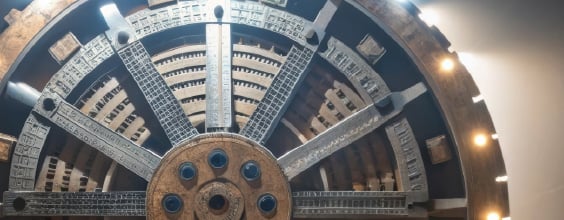By Adrian Malone, Head of Digital Project Delivery and BIM, WSP in the UK
How will it affect me?
Naturally, everyone affected by a new road scheme is keen to know about the impact it will have on their journeys. Will it make their journey to work faster? If so, by how much? Will it reduce congestion at that roundabout that always seems to be busy? Currently, it’s hard for road users to get answers to such specific questions. Digital technology could change that.
Here’s what customer engagement could look like in the future. Let’s imagine a new distribution centre and associated road scheme is being built next to a large food manufacturing facility. The office manager, Janya, is hosting her monthly team meeting. This month, the meeting is focusing on the new development and road scheme. Janya is keen for her team to understand what the project will mean for them.
3D and augmented reality
Opening a smartphone app provided by the design team, Janya ‘flicks’ an image up on the interactive whiteboard. It’s a 3D representation of the scheme, linked to the digital twin. Using gestures on her phone she’s able to navigate through the scheme and show her team exactly where everything will be in relation to their facility. Then they hold their own smartphones up to the window to get an augmented reality view of exactly what the scheme will look like, superimposed on today’s view. They have seen some drawings before, but this makes it much easier for them to understand what will be built and how it will really look.
Next, Janya uses the app to run a simulation of the construction sequence on the whiteboard. It shows how quickly the work will be completed and how disruption will be minimised, with construction robots undertaking the groundworks and rapid installation of elements that have been manufactured off-site. Mindful of safety, Janya’s team is impressed that this scheme will be one of the first in the UK to separate the construction workers from both the live traffic environment and construction machinery. The team remarks at how the construction scheme is much more like their own manufacturing process – not like a building site at all.
Better informed, better prepared
Following the meeting, the team retain access to the digital model through their smartphones so they can explore how the scheme will affect them. One team member, Josh, is a shift worker and, because a lot of the construction work will happen at night, he’s particularly interested to see how the project will affect him.
First, he looks at what difference the scheme will make when it’s completed. He enters his home location into the app and can see his existing journey to work, travel time, and the pinch points. Josh then selects the new road and sees how this will provide an alternative route to work, which should save him around 10 minutes each morning. The route planner compares current journey times using real traffic-flow information with predicted traffic flows for when the new facility and road are both open.
Next, Josh checks whether there will be any delays while work is being undertaken. He enters his personal shift pattern into the app and sees that there will be three days where the model recommends he allows an additional 15 minutes for his journey. With a quick tap, Josh can add a reminder to his personal calendar about these dates and send the information to the satnav in his car. Should the construction schedule change, he will automatically receive updates.
Thanks to the digital twin, people like Josh, Janya and thousands of others affected by the new road, will be better informed, better prepared and more engaged with the project.
About Adrian Malone:
Adrian is Head of Digital Project Delivery and BIM for Transport & Infrastructure at WSP in the UK. With more than 20 years of experience in the construction sector, Adrian has spent the majority of his career engaged with innovation and research in BIM and digital training including EU-funded research on industrialised construction, BIM initiatives with professional institutions such as RICS and APM, and most recently, I3P. Adrian has a master’s degree in information systems, and combines his technical knowledge with a strong people and customer focus. He has experience in contacting and consulting organisations as well as both construction and facilities management. Adrian is a passionate advocate for innovation and digital transformation in the construction and engineering sector. Follow him on LinkedIn here.













